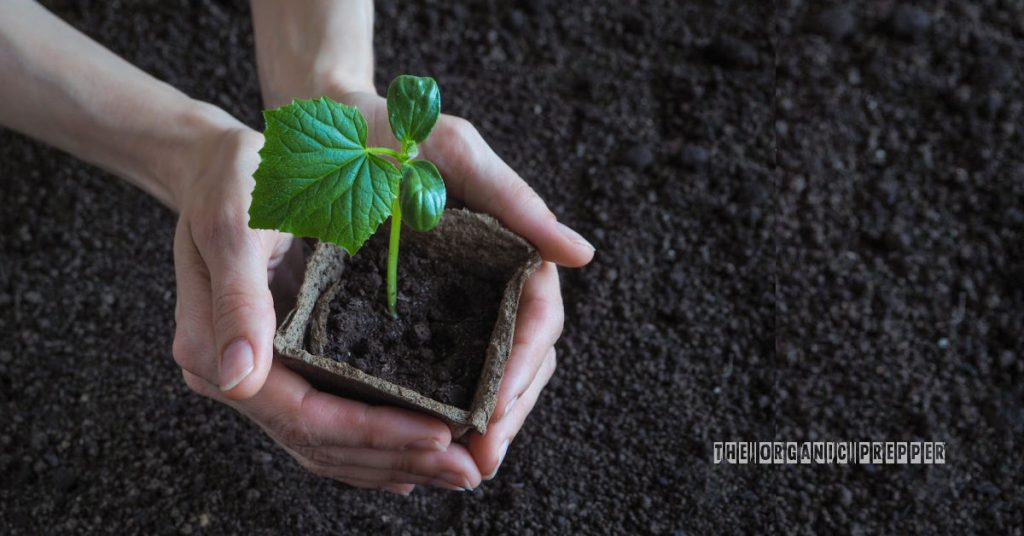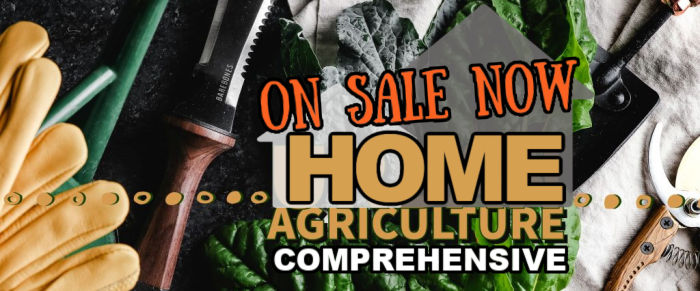
As time goes by, when you’re growing your own food, you’ll become more aware of the cycles of nature. Everything from the weather to the wildlife in your garden takes on a new meaning. You’ll take more notice of things such as insect predation. Weather is a huge big deal, especially since the lovely days of Spring can quickly turn into a storm strong enough to destroy all you’ve worked to accomplish.
And yet, we must plant our garden in order to harvest the food from it. So how do we decide when the time comes to plant our precious seedlings outside and let Nature take its course? I’ll discuss that in this article.
Four big factors go into this decision: last frost date, soil temperature, seedling readiness, and, yes, the immediate weather forecast.
Are your seedlings ready?
Readiness of seedlings is very easy. How old are the seedlings, and have they been properly hardened out? You’ll want your seedlings in the 8-12 week old range. If you’ve purchased them, then they’re likely of proper age and ready to face the weather. For newer gardeners, hardening out is the process of getting your seedlings ready to deal with the great outdoors.
Seedlings that have been started indoors need to be acclimated to sunshine, wind, and rain or they’ll die very quickly. Hardening out is done by placing your seedlings outside for increasing amounts of time, exposing them to those conditions. The process usually takes 1-2 weeks. I put my seedlings out for 1 hour the first 2 days, then double that time every 2 days until the seedlings are staying out all night.
Temperatures do have to be appropriate to the plants. Specifically, frost-sensitive items such as tomatoes and peppers need daytime temperatures in the 60-80F range and nights no cooler than 50F, preferably a touch warmer. More frost-tolerant things such as brassicas (broccoli, cauliflower, cabbage, and kohlrabi) can deal with nights in the 40s. If you’ve got anything cooler than that in your forecast, I wouldn’t put your plants out overnight. A hard freeze, defined as temperatures in the high 20s or less, is a definite no-no!
It’s OK if you don’t put plants out every single day. As I type, the last 10 days of 70s in my area have given way to the 50s, along with rain and snow in the forecast. My seedlings got a 45-minute drink and are back on the shelf. My overwintered pots are outside but will be brought back in due to low nighttime temperatures. The seedlings are somewhat hardened out but not fully, and therefore aren’t ready to be planted in the garden.
What is your soil temperature?
Potatoes are a frost-tolerant crop that actually prefers cooler weather, and the soil temperature in my garden was 56F. So I did, however, plant my potatoes yesterday.
The minimum soil temperature for planting potatoes is 50F. I also dug down 6 inches to where the seed would actually be sown for my measurement. I once learned the hard way that 48F wouldn’t cut it. Soil temperature has to be 50+F and not one degree less! More is better. My potatoes that year were runted at best, and many of the seed potatoes didn’t even sprout.
Tomatoes and peppers prefer soil temps in the 60s. That’s the problem with cool soil temperatures: the seed will often rot in the ground, producing nothing.
Plants transplanted into cool soil will be runted and produce little if anything. Soil temps can be measured using a soil thermometer, easily available online or possibly at your local garden center.
What’s the weather forecast?
So how about that weather forecast? Eventually, the garden will experience severe weather, and the plants will just have to deal with it. However, in the beginning, I want to give my plants the best edge possible, so I try to choose a planting day that gives them a 7-10 day stretch of decent weather. Even hardened-out plants need to adjust to being in the ground!
It’s a huge change, so picking your weather as carefully as possible is a must. One year I was all set to plant potatoes in mid-April. The soil temps were right, and everything was a Go. The weather forecast mentioned a spring storm coming that weekend, so I put things off for a few days. We actually got Blizzard Evelyn. My potato planting plans were exchanged for moving nearly 30 inches of snow. Soil temperatures dropped, and any plantings were put off for a good month that year. The weather forecast matters!
What are your local frost and freeze dates?
Frost and freeze dates are extremely important to the gardener. These vary according to grow zone, and there’s more than one grow zone system. Here in the US, we use the USDA system. You can find your grow zone by simply typing the phrase USDA grow zone along with your zip code into your favorite search engine. (Here’s a link with a calculator.)
Once that’s known, you can learn what the average frost and freeze dates are for your area. I live in the upper end of zone 5B, and my average last frost date is typically Mother’s Day or around May 10th. However, it’s not uncommon here to hold off on planting the more frost-sensitive stuff, such as tomatoes and peppers, until Memorial Day. Yes, we’ve been known to get snow and a hard freeze in May! Where my precious seedlings are concerned, better safe than sorry.
There’s so much to learn!
As you grow in gardening knowledge, it’s useful to learn which plants are more frost-sensitive vs. frost-tolerant. Seed packets will usually give this information, but what if you’re saving your own seeds? Then it’s better to know.
It’s also useful to learn which plants transplant well vs. those that are best direct-seeded. I learned about the latter this year, thankfully, the easy way! I’m going to try corn for the first time, and my original garden plan called for starting it indoors. While researching how to grow it, I ran across many mentions of corn not transplanting well. I checked with some other gardeners I know that grow it, and they assured me this information was correct. Corn is best direct seeded. My plans changed accordingly.
Object lesson: research is a good thing. Gardening is a forever learning process, and learning is a good thing too. Garden and learn!
Speaking of learning, if you want to go more in-depth in your garden this year, check out our Home Agriculture Comprehensive course!
What is your agricultural zone? How do you decide when to plant your seedlings outdoors? What experiences have you had? Tell us in the comments section!
It is my sincere desire to provide readers of this site with the best unbiased information available, and a forum where it can be discussed openly, as our Founders intended. But it is not easy nor inexpensive to do so, especially when those who wish to prevent us from making the truth known, attack us without mercy on all fronts on a daily basis. So each time you visit the site, I would ask that you consider the value that you receive and have received from The Burning Platform and the community of which you are a vital part. I can't do it all alone, and I need your help and support to keep it alive. Please consider contributing an amount commensurate to the value that you receive from this site and community, or even by becoming a sustaining supporter through periodic contributions. [Burning Platform LLC - PO Box 1520 Kulpsville, PA 19443] or Paypal
-----------------------------------------------------
To donate via Stripe, click here.
-----------------------------------------------------
Use promo code ILMF2, and save up to 66% on all MyPillow purchases. (The Burning Platform benefits when you use this promo code.)






You need enough seed to replant at least twice, EVERY YEAR. Plant too early, and the seed freezes, plant again, and it rains really hard and washed seed away or rots it, plant a third time, and your seed gets eaten by hungry birds. What will you do when you have no seed?
*shrug* I save seeds. No worries.
This is my 3rd year of the “lazy woman’s approach to tomato growing”. I simply leave a whole bunch of leftover overripe tomatoes covering my raised beds over the winter. In the spring, I cover it all up with a layer of compost. Without fail, around 3 weeks before Memorial day, 20-40 tiny tomato plants appear, like magic. Once they are big enough, I replant them where I want them. No grow lights required. Added bonus: I have no idea what variety they are so that will be a surprise again. They certainly are well adapted to our unique garden conditions.
That is BRILLIANT!!!!
Never done it…my last gasp of my current 30 tomato plants (more will come soon) for the late SURGE…and their last gasp will be spared my usual tossing over the fence to my scrambling chicken fans…see last year’s pic below…
Printing your move down…cutting it out…and scotch taping it to my hard copy planting calendar!!!
Next year’s year end chicken pic????